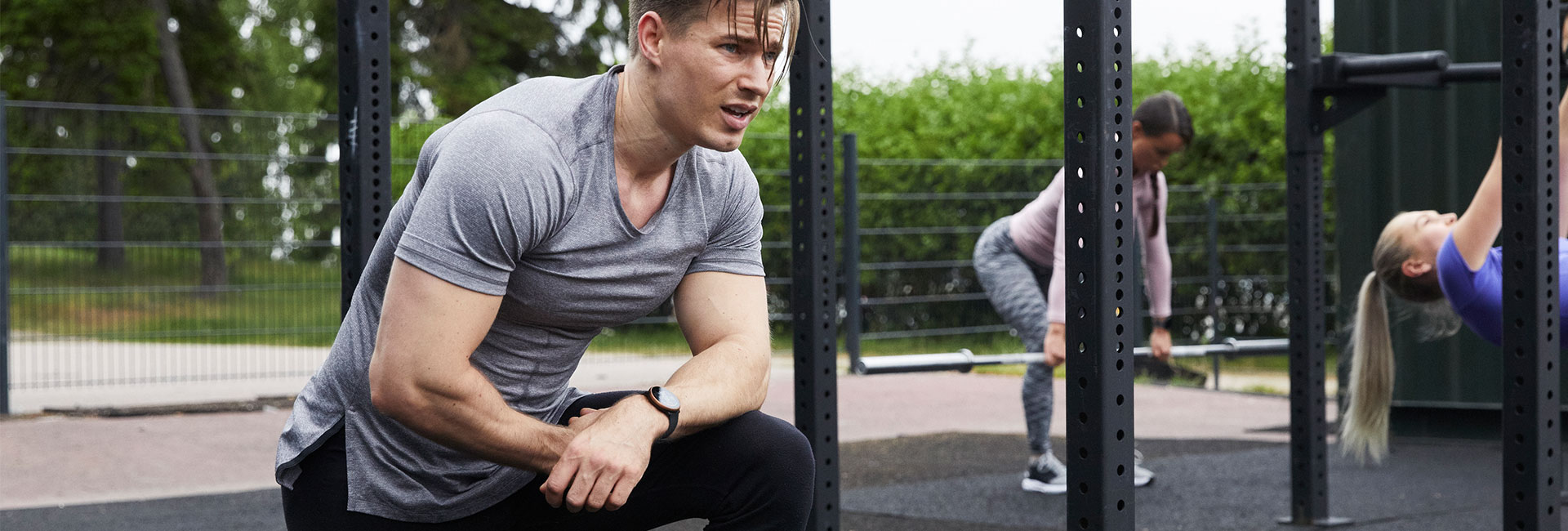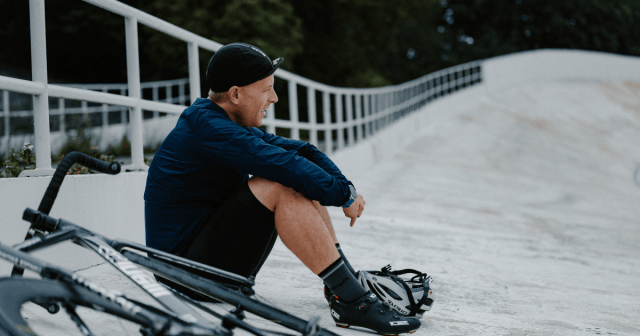‘Train Hard, Recover Harder’. Heard this expression before?
It’s a good one to remember as it’s during recovery when gains are made. It’s the time when your body repairs and rebuilds. Failure to respect this makes it impossible to see progress. It’s a common issue, one that often gets confused with overtraining.
In reality, most people who think they are overtraining are actually under-recovering.
A lot of us cool down post-exercise and consume a protein shake or light meal to refuel the body. But there’s a lot more you can do to boost recovery. That’s right, it starts before the workout and continues long after, too.
Use these strategies to recover faster and accelerate your results.
Warm Up Smarter to SPEED WORKOUT RECOVERY
The old school warm-up was nothing more than a quick run on a treadmill. But things have changed. We now understand this isn’t enough to prepare the body for exercise – it’s unspecific and incomplete.
Instead, think of a warm-up as ‘movement preparation’. The goal is exactly that: to prepare the body for the movements you have planned. To optimize performance and minimize the risk of injury. It’s not just about raising your body temperature and getting a sweat going.
Think of your warm-up more as reconnecting the machinery. You are preparing the joints so they are ready to move your weight. Reinforcing proper movement patterns and firing up your muscles for more powerful contractions.
So what does this have to do with recovery?
It’s going to indirectly speed it up. When you move more efficiently, you will put less stress on the joints and less strain on the muscles. This means you can expect to recover faster.
A simple blueprint for an effective warm up consists of three steps. (You could also insert some foam rolling between steps 1 & 2 if you have time);
1. Light aerobic work
5 mins of light jogging, cycling, crosstrainer, skipping, etc to raise core temperature. This will increase muscle pliability, so they respond better to dynamic stretching and are less susceptible to injury.
2. Dynamic stretching
Pick a handful of movements for the key joints such as the hips, spine and shoulders. Perform 10 reps of each, moving in and out of end range. Dynamic stretching will unlock mobility and improve power output. It’s scientifically proven.
3. Muscle Activation
Pick one or two exercises that target the key stabilizing muscles. Leg day? Try glute bridges and monster walks with mini bands. Upper body? Face pulls and plank shoulder taps. Muscle activation of the key stabilizers is going to clean up energy leaks, improve movement quality and increase strength.
Sleep – The CRUCIAL ELEMENT IN WORKOUT RECOVERY
Sleep is a very important (yet often overlooked) pillar of health. It affects everything from mood to cognitive health. And most relevant for us fitness buffs – physical performance.
Given that sleep heavily impacts performance, do everything in your power to sleep well.
Some simple strategies include:
- Get on a sleep schedule. Aim for a consistent bedtime and wake up time every day.
- Sleep in absolute darkness or as close to it as possible.
- Turn off all electronics an hour before bed. And yes, that includes your phone! This removes exposure to blue light (which inhibits melatonin production) and late night stimulation.
Unfortunately, even with the most carefully curated night time routine, the quality of your sleep is not fully within your control. From a training standpoint, it’s important to think about how rested and refreshed you feel in the morning. This is your perceived recovery status (PRS).
We all know what it’s like to train after a bad night sleep: low energy, less strength and quick to fatigue. What’s worse, it can easily lead to overtraining or a bout of sickness from a weakened immune system.
This is a powerful strategy to preserve performance and improve recovery.
Rather than a very rigid training structure, it’s sometimes better to adjust the intensity of your workouts based on your PRS. It ensures that you don’t break your body down. Instead, you’ll make continuous, sustainable progress – play the long game!
ASSESS YOUR RECOVERY STATUS
To assess your perceived recovery status (PRS), consider the quantity and quality of your sleep. How long did you sleep for and how rested do you feel? Then, use this to inform smarter training decisions.
Use a subjective scale of 1-10 with 1 being extremely tired and 10 being highly energetic.
Example 1:
Let’s say you slept for 6 hours and feel ground down when you wake up. You score PRS at around a 2.
- That HIIT session you had planned might not be such a good idea. You might consider a 30-minute moderate-intensity bike ride instead.
- Have a heavy lifting day planned? Perhaps you would be wiser to scale the weights down to a more moderate load. Hell, maybe you feel so exhausted, you would actually be better off taking a full rest day.
Example 2:
Let’s say you wake up feeling like Superman (PRS 10).
- Why not take advantage of this by giving a little extra? That could mean lifting heavier, pushing harder or running faster!
With Polar Ignite’s advanced sleep tracking capabilities, you can measure everything from quantity metrics, like total sleep time, deep sleep, REM sleep, and more, to quality metrics like your heart rate average, heart rate variability, and breathing rate. This data is then neatly packaged up to give you a Nightly Recharge score.
Admittedly, it can be challenging to reliably gauge your PRS. One way to take the guess work out is to use a fitness watch with a sleep tracking feature.
Armed with sleep and recovery data, you can easily make adjustments to your training if needs be. That could be going harder or taking it easy. It’s a superb strategy to maximize recovery and ensure long term, sustainable progress.
Program Regeneration Workouts
Passive rest on non-training days isn’t always the best strategy to boost recovery. Taking a more active approach to workout recovery can speed up the process, so long as the intensity is kept low. Physical activities that fit the bill:
Low Intensity Cardio
How It’s Done
Shoot for 20-30 minutes of continuous activity. Keep the heart rate somewhere between 60-70% of maxHR (120-140bpm for most people).
For a regeneration workout, it’s a good idea to stick to low impact modes such as cycling, elliptical, swimming, ski-erg … anything that removes eccentric loading and joint stress.
The Benefits
Increased blood flow, oxygenation of tissues, and removal of waste products that can build up after intense workouts. Aside from the physiological benefits, it simply feels good. That mood uplift plays an important role in shifting your body to a more restful state.
Mobility / Self-Massage
How It’s Done
Mobility work is all about getting more motion into the joints. It combines static and dynamic stretching, low intensity body weight movements and exercises like controlled articular rotations.
Self-massage involves foam rolling and/or using a ball (such as a tennis ball) to get a more targeted release of the tissues.
The Benefits
Self-massage and mobility work is a powerful combination to reduce muscle tension and improve tissue quality. It’s also going to help keep your joints healthy. It’ll bring them a flow of nutrients and synovial fluid. This improves the way they function.
Example Regeneration Session
Any of the above activities will improve recovery. You could go for a 30-minute swim, stay at home and perform some mobility work and self-massage. OR you could combine them all, which would make for a hell of a potent recovery session.
Try this:
- 20 min bike
- 10 min foam rolling
- 20 min active/dynamic stretch
Final Thoughts On WORKOUT RECOVERY
There’s a lot you can do outside the post-workout window to boost your workout recovery. Use these tips and tricks and your body will repair and rebuild faster than ever before. Let the gains keep coming!
If you liked this post, don’t forget to share so that others can find it, too.
Or give it a thumbs up!
I like this article
Please note that the information provided in the Polar Blog articles cannot replace individual advice from health professionals. Please consult your physician before starting a new fitness program.






